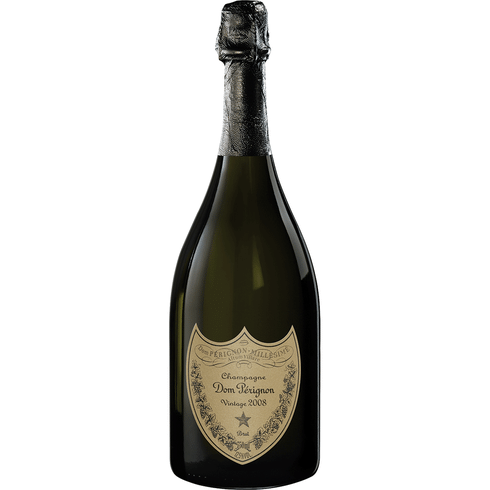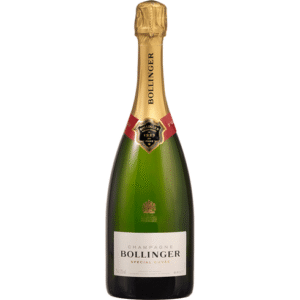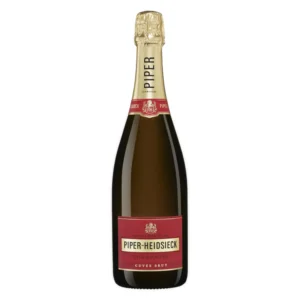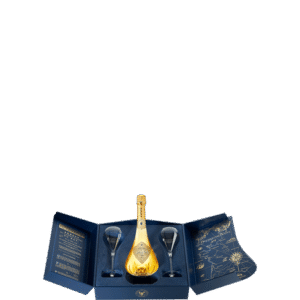Dom Perignon, 2010
$185 Original price was: $185.$140Current price is: $140.
Dom Pérignon 2010
Experience the luxurious Dom Pérignon 2010. This vintage champagne from a remarkable year offers vibrant notes of citrus, white peach, and toasted brioche, with elegant, fine bubbles. At 12.5% ABV, its complex, silky finish is perfect for grand celebrations or pairing with exquisite dishes.
Dom Pérignon 2010: The Ultimate Guide to a Legendary Vintage
The name Dom Pérignon evokes an aura of luxury, celebration, and unparalleled champagne craftsmanship. Each vintage is a testament to a single year’s character, and few have generated as much excitement as the Dom Pérignon 2010. Hailed by critics as a wine of power and precision, it’s a bottle that every champagne enthusiast should experience.
But what makes this particular vintage so special? Is it worth the investment? And how can you ensure you’re buying an authentic bottle?
This comprehensive guide will delve deep into the world of Dom Pérignon 2010. We’ll explore the story behind the vintage, its critical acclaim, detailed tasting notes, and practical advice on pricing, serving, and cellaring. Whether you’re a curious beginner or a seasoned collector, this article is your trusted resource for all things related to the 2010 Dom Pérignon.
What is Dom Pérignon? Understanding the Prestige
Before we focus on the 2010 release, it’s essential to understand what sets Dom Pérignon apart. It is a prestige cuvée champagne, meaning it is the top-tier wine produced by Moët & Chandon. Contrary to popular belief, Dom Pérignon is not a brand of non-vintage champagne; it is always a vintage champagne.
This is a crucial distinction. A vintage champagne is only produced in years where the grape quality is deemed exceptional enough to stand on its own, rather than being blended with reserve wines from other years. This commitment to excellence means that in poor years, no Dom Pérignon is released at all. The Dom Pérignon 2010 vintage is the result of this rigorous selection process.

The 2010 Vintage: A Year of Climatic Drama
The character of any great wine is born in the vineyard, and the 2010 growing season in Champagne was a rollercoaster. Understanding this context is key to appreciating the wine in your glass.
A Challenging Growing Season
The year began with a cold, harsh winter and a wet, cool spring. This delayed the vine’s growth cycle and created challenges during flowering. However, fortune favored the region with a dramatic turnaround. A hot, dry summer arrived, saving the crop and allowing the grapes—primarily Pinot Noir and Chardonnay—to achieve optimal ripeness and concentration.
This contrast—a difficult start followed by an ideal finish—is what defines the Dom Pérignon Vintage 2010. It created a champagne with both the power to age and a remarkable freshness.
Tasting Notes: Experiencing the 2010 Dom Pérignon
So, what can you expect when you pour a glass of Dom Pérignon 2010? The house describes it as a “Plenitude of Energy,” and the critics agree.
-
Appearance: A brilliant, luminous gold with subtle green reflections, and a very fine, persistent stream of bubbles.
-
Aroma (Nose): The bouquet is complex and intense. Initial notes of ripe white fruit—think pear and peach—give way to toasted hints of brioche, almond, and a distinct mineral quality, almost flinty.
-
Palate (Taste): This is where the 2010 Dom Pérignon truly shines. The first sip reveals a vibrant acidity that is immediately balanced by a rich, rounded texture. Flavors of candied citrus, dried apricot, and a touch of spice unfold. The signature Dom Pérignon duality is present: both powerful and elegant, weighty yet precise. The finish is long, clean, and mouthwateringly mineral.
Dom Pérignon 2010 Price: A Buyer’s Guide
The Dom Pérignon 2010 price can vary significantly based on the retailer, format, and whether you’re buying from a primary or secondary market. As a general guide:
-
Standard 750ml Bottle: You can expect the 2010 Dom Pérignon price to range from $180 to $250 for a standard bottle from reputable e-commerce wine merchants.
-
Larger Formats: Magnums (1.5L) are highly sought after for aging and often command a higher price per milliliter, typically ranging from $400 to $550.
Tips for Buying Dom Pérignon 2010 Online
Purchasing fine wine online requires caution. Follow these tips to ensure a secure and satisfying purchase:
-
Buy from Reputable Retailers: Only purchase from well-established, trusted e-commerce wine shops or auction houses with verified authenticity guarantees.
-
Check Storage Conditions: Ideally, the seller should provide information about the wine’s provenance and storage history. Heat damage can ruin even the greatest champagne.
-
Compare Prices: While price shouldn’t be the only factor, comparing the dom perignon 2010 price across a few trusted sellers can help you find a fair deal.
-
Look for Special Offers: Some retailers may offer discounts on case purchases or include accessories like champagne flutes.
For more insights on purchasing fine wine, explore our guide on [How to Buy Champagne Online: A Beginner’s Guide to E-commerce].
How to Serve and Enjoy Your Bottle
To fully appreciate the Dom Pérignon 2010 vintage, proper serving is essential.
-
Temperature: Chill the bottle to between 8-10°C (46-50°F). Avoid over-chilling in a freezer, as this will mute the complex aromas and flavors.
-
Glassware: Ditch the wide, flat coupes. Opt for a tall, slender tulip-shaped glass or a standard white wine glass. This shape concentrates the aromas and preserves the bubbles.
-
Food Pairings: The structure of the 2010 Dom Pérignon makes it incredibly versatile.
-
Perfect Pairings: Sushi, sashimi, grilled lobster, roasted chicken with morel cream sauce, or even mildly creamy cheeses like Brie or Camembert.
-
Our Top Pick: Enjoy it with simple, high-quality ingredients like grilled scallops or even lightly salted popcorn to let the wine itself be the star.
-
Cellaring Potential: Is Dom Pérignon 2010 Ready to Drink?
This is one of the most common questions about this vintage. The answer is nuanced.
-
Drinking Now: Yes, the Dom Pérignon 2010 is absolutely delicious now. Its energy and freshness are incredibly appealing.
-
Aging Potential: This is a champagne built for the long haul. The Dom Perignon vintage 2010 has the acidity and structure to age gracefully for 20, 30, or even 40+ years. With time, those primary fruit notes will evolve into deeper, more complex flavors of honey, toast, and truffle.
If you’re building a collection, this is a vintage to buy by the case and taste a bottle every few years to witness its fascinating evolution. For more on this, see our article on [How to Start and Manage Your Wine Collection].
Dom Pérignon 2010 vs. Other Vintages
How does the 2010 compare to its famous siblings?
-
vs. Dom Pérignon 2008: The 2008 vintage is often considered one of the greatest of all time, with razor-sharp acidity and incredible precision. The 2010 Dom Pérignon is a touch warmer and more approachable in its youth, offering a richer, more opulent fruit profile.
-
vs. Dom Pérignon 2009: The 2009 was a ripe, sunny year, resulting in a softer, more immediately generous champagne. The 2010 provides a more structured and linear counterpoint.
Each has its merits, but the Dom Pérignon 2010 stands out for its perfect balance of power and vibrancy.
Conclusion: A Vintage Worth the Celebration
The Dom Pérignon 2010 is a spectacular champagne that perfectly captures the dynamism of its birth year. It is a wine of contrast—powerful yet graceful, youthful yet promising incredible longevity. Whether you’re opening a bottle to mark a milestone occasion or adding it to your cellar for the future, it is an investment in an unforgettable experience.
Its broad appeal, critical acclaim, and stellar aging potential make the Dom perignon 2010 a benchmark vintage that will be discussed and enjoyed for many decades to come.
Frequently Asked Questions (FAQ)
Q1: Is Dom Pérignon 2010 a good year?
A: Yes, Dom Pérignon 2010 is considered an excellent to outstanding year. It was a challenging growing season that culminated in a hot, dry summer, producing champagnes with excellent ripeness, vibrant acidity, and significant aging potential. It is highly rated by critics and is a fantastic expression of the vintage.
Q2: What is the best way to store an unopened bottle of Dom Pérignon 2010?
A: Store the bottle on its side in a cool, dark place with a consistent temperature (around 55°F or 13°C is ideal). Avoid areas with vibration, light, or strong odors. A wine refrigerator is the best option for long-term storage.
Q3: How long does an opened bottle of Dom Pérignon 2010 last?
A: To preserve the bubbles and freshness, use a champagne stopper and keep the bottle in the refrigerator. An opened bottle of Dom Pérignon 2010 will still be enjoyable for 1-2 days, though it will be best on the first day.
Q4: Can Dom Pérignon 2010 be considered an investment?
A: While most Dom Pérignon is made for drinking, certain vintages can appreciate in value, especially in larger formats like magnums or from exceptional years. The 2010 Dom Pérignon has strong critical scores, which supports its value. However, wine investment carries risks, and proper storage is paramount. It is best to buy for pleasure first and potential appreciation second.
Q5: What’s the difference between Dom Pérignon 2010 and Dom Pérignon P2 2010?
A: Dom Pérignon “Plénitude 2” (P2) is the same base wine as the original release, but it has undergone significantly extended aging on its lees (for around 15 years or more) before disgorgement. This extra aging creates a more complex, evolved, and powerful champagne. The P2 is released later, is much rarer, and commands a significantly higher price than the initial Dom Pérignon Vintage 2010 release.
Be the first to review “Dom Perignon, 2010” Cancel reply
Related products
Champagne
Champagne
Champagne
Champagne
Champagne










Reviews
There are no reviews yet.